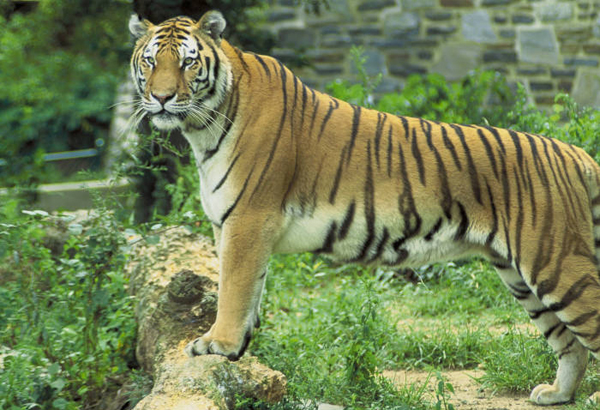Don't Call It a Comeback: Tigers On the Rise

There are currently 1,706 tigers in India, according the country's government, up from 1,411 in 2007 the year of the last tiger census.
A tiger reserve called the Sundarbans, which contains 70 tigers, was included in the count for the first time. Even without the inclusion of the Sundarbans tigers, the population rise this time around would still stand at 225 new tigers, signifying a 16 percent increase.
The count, conducted by India's National Tiger Conservation Authority in conjunction with the World Wildlife Fund (WWF) and others, was the biggest tiger population survey ever undertaken. The groups surveyed several areas in India that aren't tiger reserves or national parks, and found a surprising number of tigers there. Southwest India's Western Ghats Complex, for example, which has been a focus of recent WWF conservation efforts, was found to contain more than 50 tigers.
"These numbers give us hope for the future of tigers in the wild, and that India continues to play an integral role in the tiger's recovery," WWF International Director General Jim Leape said at the International Tiger Conservation Conference on Monday.
"As seen from the results, recovery requires strong protection of core tiger areas and areas that link them, as well as effective management in the surrounding areas," Mike Baltzer, Head of the World Wildlife Fund's Tigers Alive Initiative, said at the opening of the conference. "With these two vital conservation ingredients, we can not only halt their decline, but ensure tigers make a strong and lasting comeback."
Tigers numbered more than 100,000 at the turn of the last century but have since lost more than 97 percent of their population and 94 percent of their home range as a result of habitat destruction and poaching. Approximately 3,200 of them now live in increasingly isolated pockets of land in 13 countries in Asia and the Russian Far East.
The human population, on the other hand, has skyrocketed in many of those countries over the same time frame. In India, the population in 1900 was 283 million. Today it stands at 1.2 billion.
Get the world’s most fascinating discoveries delivered straight to your inbox.
Got a question? Send us an emailThis e-mail address is being protected from spambots. You need JavaScript enabled to view it This e-mail address is being protected from spambots. You need JavaScript enabled to view it This e-mail address is being protected from spambots. You need JavaScript enabled to view it This e-mail address is being protected from spambots. You need JavaScript enabled to view it This e-mail address is being protected from spambots. You need JavaScript enabled to view it This e-mail address is being protected from spambots. You need JavaScript enabled to view it This e-mail address is being protected from spambots. You need JavaScript enabled to view it This e-mail address is being protected from spambots. You need JavaScript enabled to view it This e-mail address is being protected from spambots. You need JavaScript enabled to view it This e-mail address is being protected from spambots. You need JavaScript enabled to view it This e-mail address is being protected from spambots. You need JavaScript enabled to view it This e-mail address is being protected from spambots. You need JavaScript enabled to view it This e-mail address is being protected from spambots. You need JavaScript enabled to view it This e-mail address is being protected from spambots. You need JavaScript enabled to view it This e-mail address is being protected from spambots. You need JavaScript enabled to view it This e-mail address is being protected from spambots. You need JavaScript enabled to view it This e-mail address is being protected from spambots. You need JavaScript enabled to view it This e-mail address is being protected from spambots. You need JavaScript enabled to view it This e-mail address is being protected from spambots. You need JavaScript enabled to view it This e-mail address is being protected from spambots. You need JavaScript enabled to view it This e-mail address is being protected from spambots. You need JavaScript enabled to view it and we'll crack itThis e-mail address is being protected from spambots. You need JavaScript enabled to view it . Follow Natalie Wolchover on Twitter @nattyover
Natalie Wolchover was a staff writer for Live Science from 2010 to 2012 and is currently a senior physics writer and editor for Quanta Magazine. She holds a bachelor's degree in physics from Tufts University and has studied physics at the University of California, Berkeley. Along with the staff of Quanta, Wolchover won the 2022 Pulitzer Prize for explanatory writing for her work on the building of the James Webb Space Telescope. Her work has also appeared in the The Best American Science and Nature Writing and The Best Writing on Mathematics, Nature, The New Yorker and Popular Science. She was the 2016 winner of the Evert Clark/Seth Payne Award, an annual prize for young science journalists, as well as the winner of the 2017 Science Communication Award for the American Institute of Physics.

